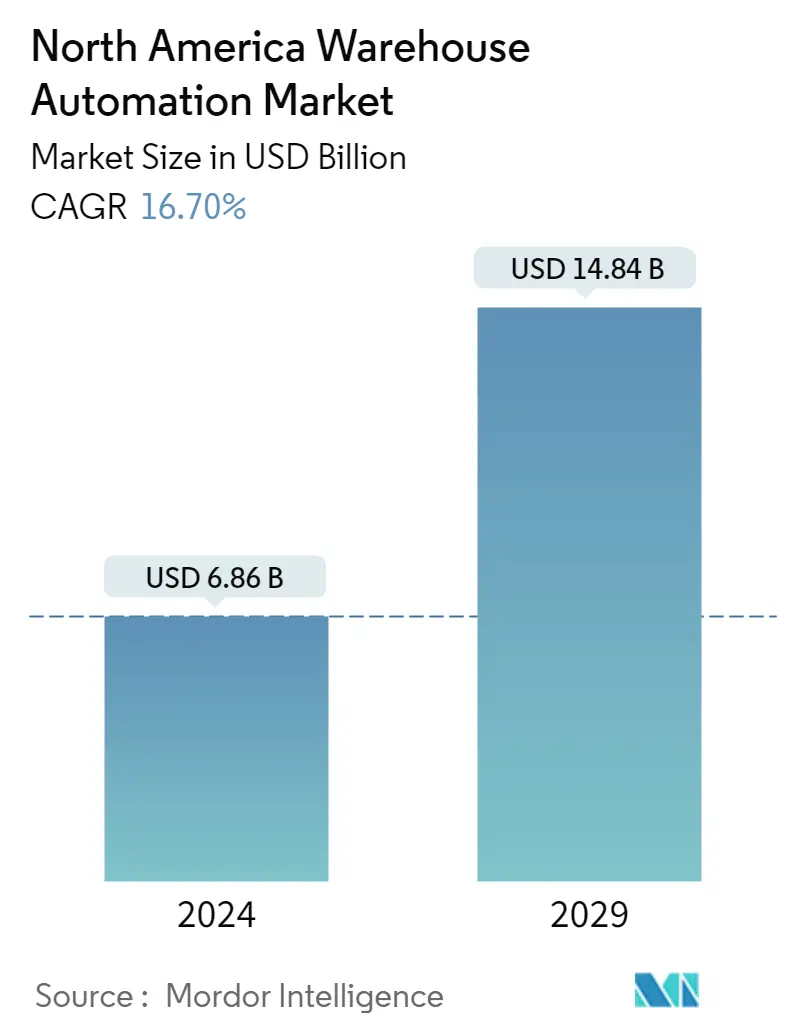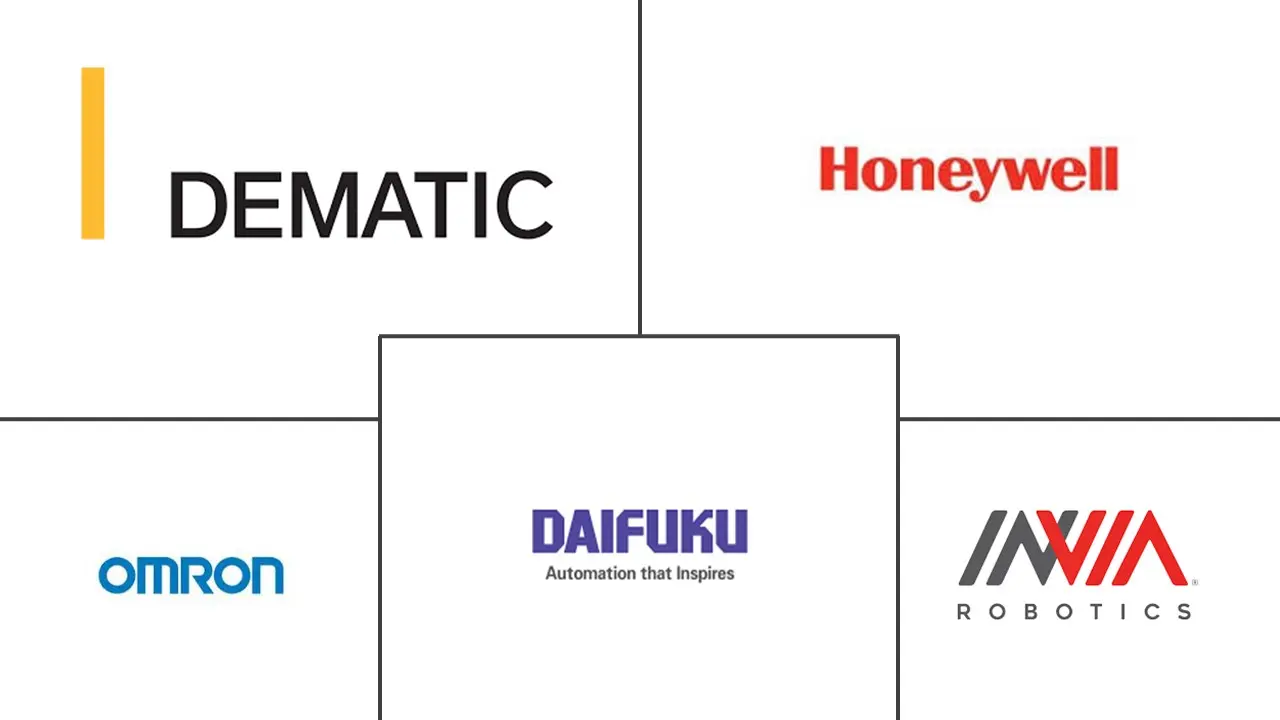Market Size of North America Warehouse Automation Industry

| Study Period | 2019 - 2029 |
| Base Year For Estimation | 2023 |
| Market Size (2024) | USD 6.86 Billion |
| Market Size (2029) | USD 14.84 Billion |
| CAGR (2024 - 2029) | 16.70 % |
| Market Concentration | Medium |
Major Players
*Disclaimer: Major Players sorted in no particular order |
Need a report that reflects how COVID-19 has impacted this market and its growth?
North America Warehouse Automation Market Analysis
The North America Warehouse Automation Market size is estimated at USD 6.86 billion in 2024, and is expected to reach USD 14.84 billion by 2029, growing at a CAGR of 16.70% during the forecast period (2024-2029).
The use of machines, control systems, and software to increase operational efficiency by using minimal human assistance in the warehouses for inventory movement is known as warehouse automation. The benefits of automating include improved customer service, scalability & speed, organizational management, and error reduction.
- By 2025, according to the Bank of America, 45% of all manufacturing will be carried out using robotic technology. Following this trend, large companies such as Raymond Limited (an Indian textile company) and Foxconn Technology (a China-based supplier to major tech makers like Samsung) have replaced workers by incorporating automatic technology in their factories.
- According to the Generix Group, automation initiatives should start with a well-optimized implementation of the Warehouse Management System (WMS). WMS alone can increase productivity by 20% at ten times the cost of installing a warehouse. Then, depending on the company's needs, there are ways to introduce robotization, for example, by setting up an automatic de-palletizing/palletizing system. The robot picks up a specific package from different palettes and creates its palette.
- Moreover, various factors have directly impacted the increasing adoption of warehouse robotics. The rising number of warehouses and increasing investments in warehouse automation, coupled with the global rise in labor costs and availability of scalable technological solutions, have driven the market for warehouse robots across the region.
- Rapid enhancement in automation technology by market vendors has led to new variations in these product ranges or software functionalities occurring more frequently. This has been causing existing technologies to become outdated quickly, and the need to be changed or upgraded regularly accounts for high costs.
- The COVID-19 pandemic has led warehouse operators to consider accelerating their schedules to adopt automation and robotics. Successful deployments create safer jobs by reducing worker interaction while increasing productivity to meet growing e-commerce demands. With the rise of e-commerce in recent months, thousands of physical stores have closed. However, the pandemic outbreak and the lockdown worldwide have affected the warehousing and industrial activities, especially in countries such as the United States.
